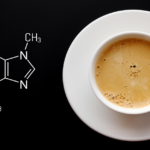The Profile of genes varies across individuals’ lifespan as a result of varying environmental exposures and contexts. There have been very few longitudinal studies conducted that examine a change in DNA methylation over time. A recent study evaluated the individual differences in DNA methylation at CpG sites across the methylome over a ten year period. Cytosine methylation in vertebrates occurs mainly at the CG dinucleotide sequences [4]. CpG sites in mammals are hotspots for mutation, where upwards of 70% of cytosines are methylated [2].
Human DNA has a high level of methylation. Uncovering if epigenetic changes can result from the interplay of environmental and genetic influences can contribute to the development of complex diseases, accelerated aging, and the steep decline in cognitive and physical function with age. Using identical twins provides an epigenome-wide association in linking environmental exposure to differential epigenetic regulation [5].
Epigenetic Markers to read Biological Age
It has been observed that individuals with the same chronological age can differ in their biological age. Little is known about what controls our biological clocks. Currently, DNA methylation is the most promising molecular marker for monitoring aging [1]. Measurable gene-environment associations are possible because markers have been utilized to track differences in biological aging amongst individuals. Analysis of epigenetic rates of aging will help find associations between the biological clock and lifestyle [3].
Longitudinal study of Twins in Epigenetic Research
Longitudinal studies provide a valuable approach to understanding the genetic and environmental contributions to the stability and change in methylation over time. The case for using identical twins is their shared genetic make-up and rearing environment make them ideal for confounding factors in human disease and mortality Twin studies are extremely valuable for interpreting the genetic and environmental basis of epigenetics. Co-twin design uses twin pairs’ differences to uncover the link between complex disease and environmental exposure, serving to reveal the acceleration of epigenetic changes over time [6].
The figure represents the identical DNA sequence in twin pairs, with one methylation site occurring in the diseased twin depicted in red (figure 1). The differences in twin’s DNA methylation can find links between epigenetic variation and environmental exposure. The uses of multiple twin pairs show where different methylation sites occur and help estimate the genetic and environmental contributions to health conditions such as biological aging, disease, and mortality [6].
Genetic and Environmental Contributions
Stability in late-life methylation is due to genetic contributions, while novel experiences and exposures contribute to methylation differences [5]. Genetic contributions at age-related methylation sites suggest that adaptations to aging are differentially impacted by an individual’s genetic background [5]. Low stability CpG sites had increased gene expression variability over time due to novel nonshared factors between the twin pairs. This suggests that these sites are responsive to “new” environmental cues, even at old age [5].
Heritable factors may be associated with differential immune responses amongst individuals. Some individuals are better adapted to the aging process than others due to the genetic influences that separate individuals from one another [5]. There is mounting evidence supporting that a certain gene’s status can affect a disease’s immune evasion capabilities. The most heritable regions of the DNA may participate in immune and inflammation pathways suggest that adaptations to aging are impacted by one’s genetic background [5].
References
- Ciccarone, F., Tagliatesta, S., Caiafa, P., & Zampieri, M. (2018). DNA methylation dynamics in aging: how far are we from understanding the mechanisms? Mechanisms of Ageing and Development, 174, 3–17. https://doi.org/https://doi.org/10.1016/j.mad.2017.12.002.
- Jabbari, K., & Bernardi, G. (2004). Cytosine methylation and CpG, TpG (CpA) and TpA frequencies. Gene, 333, 143–149. https://doi.org/https://doi.org/10.1016/j.gene.2004.02.043
- Jylhava, J., Hjelmborg, J., Soerensen, M., Munoz, E., Tan, Q., Kuja-Halkola, R., . . . Reynolds, C. A. (2019). Longitudinal changes in the genetic and environmental influences on the epigenetic clocks across old age: Evidence from two twin cohorts. EBioMedicine, 40, 710-716. doi:10.1016/j.ebiom.2019.01.040. https://www.thelancet.com/journals/ebiom/article/PIIS2352-3964(19)30047-7/fulltext
- Cecilia Lövkvist, Ian B. Dodd, Kim Sneppen, Jan O. Haerter, DNA methylation in human epigenomes depends on local topology of CpG sites, Nucleic Acids Research, Volume 44, Issue 11, 20 June 2016, Pages 5123–5132, https://doi.org/10.1093/nar/gkw124. https://academic.oup.com/nar/article/44/11/5123/2468268
- Reynolds, C. A., Tan, Q., Munoz, E., Jylhava, J., Hjelmborg, J., Christiansen, L., . . . Pedersen, N. L. (2019). A decade of epigenetic change in aging twins: Genetic and environmental contributions to longitudinal DNA methylation. doi:10.1101/778555. https://www.biorxiv.org/content/10.1101/778555v2.full.pdf
- Tan, Q., Christiansen, L., von Bornemann Hjelmborg, J., & Christensen, K. (2015). Twin methodology in epigenetic studies. J Exp Biol, 218(Pt 1), 134-139. doi:10.1242/jeb.107151. https://jeb.biologists.org/content/jexbio/218/1/134.full.pdf





